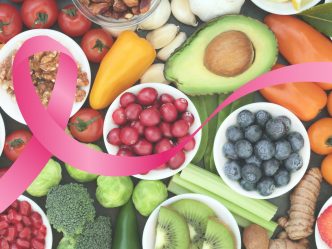You’ve mastered preparing your meals with portion sizes in mind. You’re aiming for a good mix of protein, fiber and just a bit of healthy fat. You’re on your way…
And then you get an invite to hang on Saturday night.
In a flash, you think back to past get-togethers: There’s a cocktail (or two), multiple courses, followed by dessert – none of which is in your master diet plan.
OK, don’t panic. Dining out doesn’t have to automatically derail your diet.
“Go in confidently,” said Nicole Moore, a registered dietitian with Augusta University Center for Obesity and Metabolism located at Augusta University Digestive Health Center. “It’s all about choices, and your choice to enjoy a healthier diet is already making you feel better. Focus on that positive feeling, but have a plan, too.”
You’ve got this: Your dining out guide for success
Planning for drinks and dinner at that swanky new restaurant downtown? Before you do anything else, take out your smartphone, and check out the menu.
“Most of us don’t make good choices when we’re hungry,” said Moore, “so if you decide what you want to order ahead of time, it can make it easier to stick to the plan once you arrive.”
Many restaurant menus offer nutrition information, but even if yours doesn’t, look for key terms that indicate higher calorie options – and choose not to order those dishes. Words like “pan-fried,” “crunchy,” “breaded” and “cream” are all clear red flags, but chat up your waiter, too. That side of vegetables you order may come drenched in melted butter, but the menu may not indicate that.
Fish, sirloin and poultry tend to be great lean options for entrees, or go vegetarian. Just remember that when you order, ask for any sauces or dressings that come with those entrees on the side when possible. That way, you control how many calories you eat but still get to enjoy the flavor.
Everyone ordering a dessert too? So can you. Most people will gladly split a dessert or two for the table – just ask for several spoons. That way you all get to enjoy a sweet treat without the calorie overload of a single giant slice of cake or frothy whipped cream-topped confection.
Be aware of these pitfalls
Remember, for the average person enjoying a 1,500 to 2,000 calorie diet, dinner should tally up to around 600 calories. Don’t let sneaky extra calories tip the scales. These can come in the form of:
- Bread basket, chips/salsa or other extras: Just pass on these appetizers. It can be too easy to overload on these carb- and calorie-heavy snacks; then, suddenly, you’ve eaten an entire dinner’s worth of calories and haven’t even gotten your entrée yet.
- Drinks: Southern sweet tea is a staple, but when dining out, just go with water. Depending on how it’s made, a 16-ounce glass of sweet tea can have 24 grams of sugar and 90 calories – and you know you can’t say no to refills. Save those calories for an adult beverage instead, if you choose to partake: A glass averages around 125 calories.
- Portion sizes: “I love pasta,” said Moore, “but I don’t order pasta when I go out.”
That’s because most places serve the Italian favorite in huge bowls that equal more than three portions. Like Moore, you can avoid the temptation altogether, or you can order your meal while saving half to enjoy for lunch or dinner the next day. (To really force yourself to eat only half, you can always ask for half to be boxed up immediately.)
Going out, after all, is about fun and social interaction with friends and family. Food, as they say, is just the frosting. Enjoy it by eating mindfully and with good choices – that way, you’ll have the memories of an amazing night and wake up feeling both happy and healthier.





